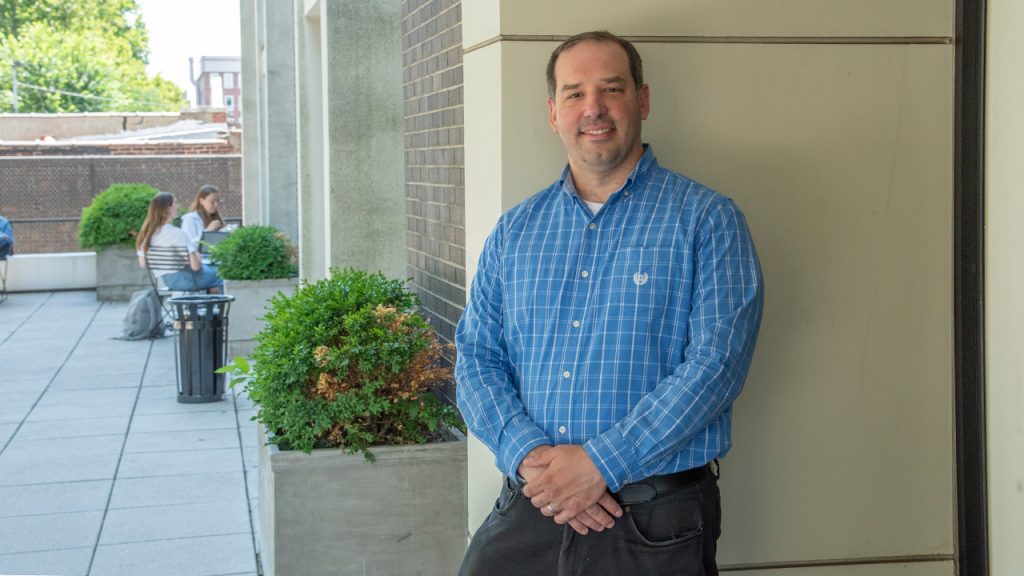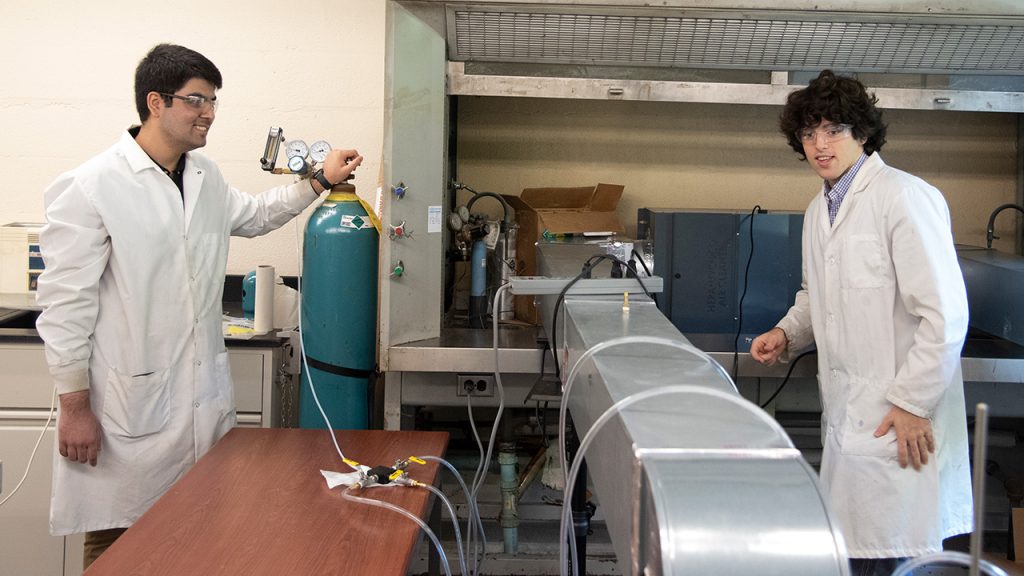To make big differences for humanity, Christopher Koenigsmann, Ph.D., and his chemistry students are starting small—working with particles that are mind-bendingly tiny.
How tiny? They’re measured in nanometers, which is one-billionth of a meter. Like the width of a marble compared to the width of the Earth.
By going that small, Koenigsmann and his students have innovated in the areas of biomedical sensors and sustainable energy technology. Now his lab has a new project: scrubbing the air clean of viruses like the one that causes COVID-19.
Preventing Cases of COVID-19
Koenigsmann sees a way to improve on a type of indoor air purifier—activated by ultraviolet light—that destroys particles of coronavirus and other viruses but can also create tiny amounts of toxic byproducts under certain conditions.
Such devices have been around for decades, and were used in hospitals to remove tuberculosis from the air, “so it’s a proven technology,” said Koenigsmann, an associate professor in the chemistry department. “It’s just [that] as it becomes scaled up and more broadly used, and in environments where the air is not tested as regularly, that’s where you can run into problems.”
He and his team are working on new technology that could break down viruses without releasing toxins, which could lead to new types of purifiers that destroy viruses on a greater scale. On a recent summer day, in a lab at the Rose Hill campus, they were getting ready to run experiments using ductwork and a filter containing new types of nanoparticles.
The lab also includes a high-temperature reaction chamber and other tech for making the nanoparticles themselves—indispensable because they’re so small.
Surface Appeal
Koenigsmann, an associate professor in the chemistry department, has long been fascinated with “being able to tune fundamental physical properties” of a substance by changing its size or other aspects.
Break a substance down into smaller units, he explains, and suddenly it’s a lot better at reacting with things, since a lot of small particles will have more total surface area than a few large ones.
How much more? If you’re turning something into nanoparticles, one square meter per gram could become hundreds of square meters per gram. “For the same amount of mass, you gain a tremendous amount of surface area,” he said.
And more surface area means more reactions. For instance, a battery made from nanoparticles offers vastly more internal surface area for conducting an electric current. And air purifiers operating on the same principle offer more surface area for reacting with viruses and churning them up.
Filtering Coronavirus
In some of today’s air purifiers, Koenigsmann said, titanium dioxide chews up a virus particle in a chemical reaction that yields carbon dioxide when it runs its course—but formaldehyde, carbon monoxide, or other toxins when it doesn’t.

To address this problem, Koenigsmann and his team are working on new types of nanomaterials that, because of their size and composition, will fully break down virus particles, giving off only carbon dioxide and opening the door to purifiers that are safe to use more widely.
His undergraduate students contribute a lot to the project—“They’ll tell you things that you wouldn’t have thought of yourself,” he said. “I’m actually learning as my students learn.”
The uses for nanotech seem endless, Koenigsmann said. “The ability to tune things like conductivity, color, catalytic activity, just by making the same material one shape or one size versus another [has] so many possible applications,” he said.


